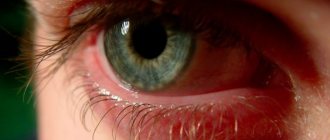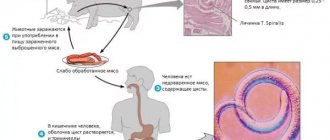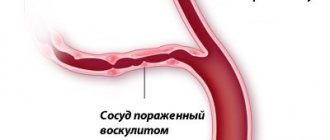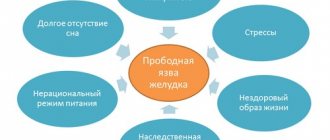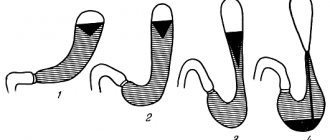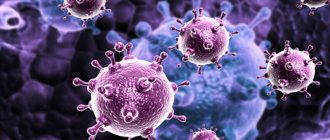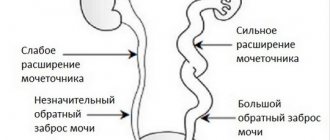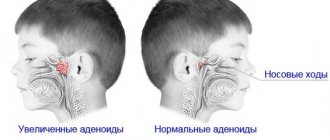Diseases of the cardiovascular system are among the most dangerous for humans. Every year, 17.5 million people worldwide die from heart problems. Such a sad result is predictable: stress, poor nutrition, bad habits - all this negatively affects the functioning of our body.
What exactly can lead to heart disease? How do they develop? And what types of cardiovascular diseases are especially common?
Cardiovascular diseases are divided into seven types:
- Rhythm and conduction disorders. They are associated with diseases such as cardiac arrhythmia, bundle branch block, cardiac fibrillation, etc.
- Inflammatory heart diseases : endocarditis, myocarditis, pericarditis. All these diseases are associated with inflammation of different parts of the heart: the inner lining - the endocardium, the cardiac muscle - the myocardium and the connective lining of the heart - the pericardium.
- Valve defects . This type of heart disease is divided into two subtypes: congenital and acquired defects. Congenital defects occur due to genetic disorders or damage to the fetus; acquired defects are most often associated with infectious lesions of the body or autoimmune reactions.
- Arterial hypertension . This subgroup of diseases is associated with a persistent increase in blood pressure.
- Ischemic lesions . Such diseases are associated with a complete or partial decrease in blood flow to the heart muscle. In the first case, the patient will have a myocardial infarction, in the second, coronary heart disease will develop.
- Damage to the blood vessels of the heart : cardiosclerosis, coronary heart disease, atherosclerosis.
- Pathological changes are diseases associated with irreversible changes in the functioning of the heart. For example, cardiac asthma and failure, hypertrophy of different parts of the heart.
The extensive list of diseases in this group includes those that we encounter. Thus, according to statistics, out of 17.5 million deaths from CVD, about 7 million people die annually from coronary heart disease, and 6.5 million people die from stroke.
Read our article “How to avoid a stroke and what to do if it happens?”
In addition to ischemic heart disease and stroke, the list of the most common diseases includes:
- peripheral artery disease
- rheumatic carditis
- heart disease
- hypertension
- deep vein thrombosis and pulmonary embolism
We'll tell you about them today.
Peripheral artery disease
Peripheral artery disease is a disease of the blood vessels that supply blood to the legs and arms. In the early stages, the patient may complain of increased sensitivity to cold temperatures, chilly extremities, a feeling of numbness or tingling, and fatigue or pain in the arms and legs.
At later stages of the disease, intermittent claudication appears - quite severe pain in the muscles of a certain group, forcing you to stop moving.
Pain occurs due to insufficient blood flow to the muscles. Up to the third stage of the disease, the pain goes away after a short rest, when the load disappears and the blood supply becomes sufficient. In the third and fourth stages of the disease, pain may occur at rest, and ulcers and necrosis may also open.
What to do? Stop smoking, control your weight, reduce your intake of easily digestible carbohydrates, animal fats and cholesterol, and regularly walk for at least one hour a day.
Convincing statistics
Disappointing statistics are published by Rosstat about the year 2014 and the mortality rate of the population. The main cause of death is still heart and vascular disease. The mortality rate per thousand of the population looks like this:
| Year | 2013 | 2014 | 3 months 2015 |
| Died out of 1000 from heart and vascular diseases | 70,0 | 65,4 | 71,8 |
And the overall mortality rate in 2014 was 131.0. It’s not difficult to compare and guess that half of Russia’s residents die from heart disease. Data for the first three months of 2020 indicate a worsening situation.
Interesting data is presented in the January WHO Bulletin based on the results of 2012: if we take only the age group of deaths of people under 70 years old, then 82% occur in families with low and middle income. Among them, 37% die from heart and vascular diseases.
Against this background, leading cardiology centers talk about the deterioration in the availability of specialized care for city and rural residents. Acute importance is attached to:
- reduction of cardiac beds in hospitals;
- insufficient training of general practitioners;
- the lack of quality medicines and the filling of the pharmacy market with generic drugs;
- high cost of surgical treatment.
194 states are members of WHO
Rheumatic carditis
Rheumatism of the heart or rheumatic carditis is a connective tissue disease that affects all layers of the heart. Rheumatic carditis begins with a typical sore throat caused by group A streptococcus. Scarlet fever, pneumonia and other diseases of the respiratory system can also occur. Rheumatism attacks approximately 2 - 3 weeks after the infection.
Rheumatic carditis is manifested by “volatile” (moving and intermittent) pain in the joints, tachycardia and arrhythmia, pain in the heart, as well as signs of heart failure: swelling of the legs, shortness of breath at rest, a blue tint to the skin, and a wet cough.
What to do? Treatment and prevention of rheumatic carditis is carried out mainly with medications and is aimed at combating streptococcal infection. For prophylaxis, more gentle antibacterial and anti-inflammatory drugs are prescribed. Traditional methods for the treatment of rheumatic carditis are not recommended.
First aid for heart and vascular diseases
The most dangerous thing about a heart attack is its unpredictability. Even heart patients cannot always recognize the very first signs, but from the outside they are clearly visible: sharp paleness of the skin, uncoordinated movements, slow slurred speech.
Having noticed the first signs of angina pectoris (rapid heartbeat, dizziness, sharp stabbing pain in the chest), you need to ensure rest: sit down, in the best case, lie down, call an ambulance and put 1 nitroglycerin tablet under your tongue. As a rule, the condition improves within five minutes, but if there is no effect, repeat nitroglycerin.
Sometimes attacks are accompanied by fainting; a person nearby can help:
- Call an ambulance;
- Ensure the patient remains immobile;
Give a drug that dilates blood vessels: nitroglycerin, validol (usually heart patients carry it with them).
Heart disease
Congenital heart disease is a fairly common disease. Modern babies are often born with this disease and sometimes spend their entire lives fighting it. But heart disease does not always occur in infancy; many adults experience it due to other untreated CVDs.
Acquired heart disease is a disease associated with disruption of the structure and function of the heart valve apparatus and leading to changes in intracardiac circulation.
Acquired heart defects develop as a result of acute or chronic diseases (rheumatism, sepsis, atherosclerosis, syphilis) and injuries that disrupt the activity of valves and change the movement of blood through the vessels.
Most often, acquired heart disease affects the mitral valve: between the left atrium and the left ventricle. Less commonly, the aortic valve. It separates the left ventricle and the aorta.
What to do? To prevent heart disease, it is necessary to treat emerging heart diseases and monitor your condition: get rid of bad habits, lose weight, play sports or exercise the body using various types of breathing exercises.
If a defect occurs, drug treatment is prescribed to relieve symptoms, as well as surgery to correct valve defects.
Main symptoms of heart disease
Diseases of the cardiovascular system are varied. They may be accompanied by the following main symptoms:
- chest pain;
- weakness and fatigue;
- headache;
- dizziness and fainting;
- heartbeat;
- dyspnea.
Chest pain
Pain to the left of the sternum or in the area of the left nipple is a common complaint in patients over 40 years of age. Substernal pain is less common, but it is a serious diagnostic sign of coronary heart disease (CHD). Pain in coronary artery disease is associated with a lack of oxygen in the heart muscle caused by insufficient blood supply. Impaired blood flow in myocardial vessels occurs as a result of the formation of atherosclerotic plaques, narrowing the lumen of the arteries. When the arteries of the heart are completely blocked, myocardial necrosis occurs - a heart attack. Oxygen starvation of the heart is accompanied by anginal pain. Anginal pain is most often localized behind the sternum, much less often in the epigastrium (upper third of the abdomen), and very rarely in the area of the left nipple (the area of the apex of the heart). The patient cannot indicate the most painful point. As a rule, he covers the pain area with his palm. A very symptomatic gesture is a fist clenched at the sternum.
Typical anginal pain is of a compressive nature, less often it is pressing or burning. Sharp, stabbing, cutting pains can occur with other heart diseases, but they are not typical for ischemic heart disease. Irradiation of pain to the left shoulder or scapula is not always associated with angina pectoris; it can also be non-coronary in nature. With IHD, pain can radiate to the jaw, teeth, collarbones, right ear, right shoulder. Anginal pain occurs suddenly, in paroxysms, most often during walking, physical activity, with excitement, as well as when exposed to cold and walking against the wind. Pain associated with moving your arms or staying in an uncomfortable position for a long time is most often not associated with heart disease. With some types of angina, pain of a typical nature occurs at night.
Anginal pain usually stops quickly, a few minutes after stopping the exercise. If an attack occurs while walking, stopping will lead to a quick cessation of the attack. Sometimes they talk about the “window display symptom,” when the patient, due to pain, is forced to stop for a short time, pretending to be looking at a store window. Nitroglycerin taken under the tongue leads to rapid cessation of a painful attack. If the pain in the heart area does not go away completely after taking nitrates, and lasts for hours or even days, this is not angina. The exception is myocardial infarction, characterized by “insensitivity” of the pain syndrome to nitroglycerin. If the patient makes various complaints about prolonged pain in the heart area (in the area of the left nipple), writes them down for memory, remembers the details, most often his angina is not confirmed.
Weakness and fatigue
These are nonspecific complaints, but they can be observed in many cardiac patients. Weakness is one of the early signs of circulatory failure. In this case, as a result of a decrease in minute volume of blood circulation, oxygen starvation of tissues, in particular muscles, occurs. Weakness may accompany inflammatory heart diseases (endocarditis, myocarditis). It quite often accompanies neurocirculatory dystonia. Weakness appears with the progression of angina and myocardial infarction.
Headache
Headache may be a sign of increased blood viscosity, which occurs with secondary erythrocytosis due to heart defects. In arterial hypertension, headache is caused by spasm of cerebral vessels. Pain in neurocirculatory dystonia is associated with impaired vascular tone. Episodes of headache in combination with transient dizziness appear with thromboembolism of the cerebral arteries against the background of atrial fibrillation, as well as with cerebral atherosclerosis.
Fainting
A short-term loss of consciousness may be a manifestation of severe bradycardia (long pauses in heart function due to atrial fibrillation, sinoatrial or atrioventricular blockade). Fainting also occurs with significant arterial hypotension.
Heartbeat
Rapid heartbeat is one of the early signs of heart failure. It is especially intensified after eating, drinking liquids (including alcohol), and after physical activity. In severe cases of heart failure, the patient gets used to the heartbeat and does not complain about it. The combination of complaints about a rapid pulse and the lack of objective confirmation is a sign of a neurotic reaction. Irregular heartbeat is most often a sign of atrial fibrillation (atrial fibrillation). Rhythm disturbances occur in various heart diseases, often complicating their course.
Dyspnea
Shortness of breath is one of the main signs of circulatory failure, which complicates the course of many heart diseases. At the onset of the disease, shortness of breath occurs only with significant physical exertion. Gradually, exercise tolerance decreases, shortness of breath appears during normal activity, and then at rest. Attacks of suffocation appear at night: cardiac asthma. Shortness of breath caused by circulatory failure may be accompanied by flaring of the wings of the nose and the participation of the muscles of the shoulder girdle. It intensifies when talking. In some cases, shortness of breath is relieved after taking nitroglycerin, in which case it is the equivalent of anginal pain.
Channel One, “Live Healthy” program with Elena Malysheva on the topic “3 unexpected signs of a diseased heart”
Hypertension
High blood pressure worries most of the world's population. This comprehensive problem, although not as dangerous as a stroke or heart attack, can easily cause them, which is why it is so important to monitor your blood pressure and find out why it is rising.
Hypertension can manifest itself as headaches, dizziness, sweating, redness of the face, spots before the eyes, irritability, etc.
What to do? In the early stages, hypertension can be controlled without medications. It is enough to give up bad habits, moderate your consumption of fatty foods, and move more.
If you feel that the condition is worsening, consult a doctor. He will prescribe the necessary medications and tell you what to do to prevent the development of the disease.
Don't forget that no treatment will be effective without you working on yourself. Be sure to watch your lifestyle and do not avoid small physical activities. If it’s already difficult for you to make friends with sports, do breathing exercises or buy a breathing simulator.
Brief description of the disease
According to statistics from the World Health Organization, coronary heart disease is the most common and most severe therapeutic problem in modern society. Such conclusions were made on the basis that every year more and more people suffer from this disease, and the incidence rate is constantly growing. What is especially dangerous is that coronary heart disease, the causes and manifestations of which are extremely diverse, often leads to complete loss of working capacity and is the leading cause of early mortality.
Deep vein thrombosis and pulmonary embolism
Deep vein thrombosis is a disease in which blood clots (blood clots) form in the deep veins. Most often they appear in the lower leg, pelvis and thighs. Thrombosis can cause chronic venous insufficiency, swelling of the legs, trophic ulcers and eczema.
The most dangerous manifestation of thrombosis is pulmonary embolism, when parts of the blood clot break off and travel to the lungs, causing a blockage. This disrupts blood flow and leads to cardiac and acute respiratory failure, which can lead to instant death of the patient or pulmonary infarction.
What to do? If you are at risk of thrombosis (age, pregnancy, craving for smoking, prolonged bed rest, excess weight), then you should see a doctor and follow the recommendations of a specialist.
They may concern both medications (anticoagulants are prescribed) and non-drug prevention. For example, wearing compression garments, drinking plenty of fluids, stretching during long trips.
Cardiovascular diseases are difficult to control, but not impossible. The main thing is to control yourself and remember that health is more important than a smoked cigarette or another cake. A healthy lifestyle is the key to a healthy heart. Don't forget about this and subscribe to our blog to read interesting articles every week.
We offer our method of treating diseases of the cardiovascular system using breathing exercises on the Samozdrav simulator. You can find out more about it by following the link.
Physiotherapeutic procedures
The role of physiotherapy in the treatment of cardiovascular diseases is difficult to overestimate. Their positive effect on the course of the rehabilitation process has been clinically proven. In this case, the goal of physiotherapy is to relieve tension in the blood vessels and improve blood circulation, which is achieved as a result of relaxation of muscle fibers. Similar techniques include:
- massotherapy;
- taking relaxing baths;
- infrared radiation;
- paraffin therapy;
- ultratonotherapy;
- local barotherapy;
- acupuncture.
The effectiveness of these techniques for each specific case may vary. However, most often, if there are problems in the functioning of the circulatory system, massage is prescribed. Its use has a beneficial effect on muscle fibers, promoting the development of reactive and working hyperemia, which has a stimulating effect on peripheral and coronary circulation.
Diagnostics
Heart problems are varied, as are the causes of their occurrence. Similar symptoms can be heralds of other diseases. At the same time, the patient does not see a doctor for a long time, not even suspecting a real threat to life and health. If even one sign of heart disease appears, do not put off visiting a cardiologist.
Diagnosis always begins with interviewing the patient and taking an anamnesis. The doctor will measure blood pressure, pulse, listen to the heartbeat, and evaluate the patient’s external condition. After this, the patient is sent for examination.
Instrumental diagnostic methods include: ECG at rest and with stress, radiography, ultrasound, coronary angiography. The names of these procedures are known to everyone and are common in the diagnosis of other ailments. Blood and urine tests are also prescribed for a complete picture.
The first most important signs of cardiovascular pathology
General fatigue and increased fatigue
Of course, physical fatigue can be associated with increased workload, additional stress and other negative external factors, but do not forget that these symptoms are also possible with the development of heart failure. Many people attribute the emerging lethargy to a “hard day,” thinking: “Everyone gets tired someday,” so in most cases, the “first bell” goes unnoticed. As a rule, if there really are disturbances in the functioning of the heart, then over time a person feels more and more “broken”, fatigue accumulates, appetite decreases, heaviness in the legs and swelling of the extremities appears. Based on these primary signs, the doctor can easily determine the presence of cardiovascular pathology, despite the difficulties of primary diagnosis.
Rarely will a dog survive more than six months from detection of the disease. Under certain conditions, such as limiting excessive physical stress and psychological arousal. Interestingly, even dogs, including Leonbergers, have a big influence on the weather and summers are not particularly hot. Tamponade. Most often, this fluid is bloody in nature and can accumulate either after an injury, after a vessel has been destroyed by a tumor, or for other unknown reasons. In one case we decided to interpret it this way.
Many of these cardiac disorders do not initially affect animals and may not be clinically evident because the heart and circulation have a great ability to compensate. Maintaining circulatory parameters is facilitated by a reflex constriction of peripheral vessels, acceleration of cardiac activity and an increase in the ability of the heart muscle to escape. However, if these compensatory mechanisms fail or are extinguished, heart failure occurs. The creation of this condition can be precipitated by increased demands on the heart such as obesity, excessive physical activity, high temperature and humidity environments, certain diseases of the respiratory system or kidneys, certain toxic or infectious processes, and due to anesthesia during operation time.
Dyspnea
Shortness of breath is the most common symptom of heart or lung failure. It can manifest itself as a lack of air, slight suffocation when a person is working or just lying down. The appearance of shortness of breath should in no case be ignored, since according to statistics, in 90 percent of cases, a heart attack occurs in people with this symptom. It should be noted that when diagnosing heart disease early, you should not rely on just one symptom, even such a serious one. Not every person can experience shortness of breath, even if he has heart problems, it all depends on the severity of the condition, but not paying attention at all is also stupid.
Clinical signs of heart failure vary depending on whether the left or right side of the heart is affected. In left-sided heart failure, there is insufficient circulation of oxygenated blood from the small pulmonary circulation to the large body circulation. As a result, blood accumulates in the lungs. As a result of an increase in blood pressure in the pulmonary circulation, fluid from the pulmonary arteries enters the lung cells and pulmonary edema occurs. Respiratory irritation resulting from pulmonary edema is associated with shortness of breath and cough.
Cardiopalmus
This condition is characterized by an increase in pulse and heart rate per minute. Almost every healthy person can feel this, for example, during severe fear, stress, after a run or prolonged physical activity. If the arrhythmia is frequent and prolonged, then we can talk about the presence of serious disorders that need to be paid attention to.
These symptoms may be inappropriate and may only appear as agitation or agitation, but are also very difficult and directly threaten the dog's life. When the right side of the heart is absent, blood stagnates in the circulation, which leads to swelling of various parts of the body. It often swells under the skin of the limbs and the entire base of the body, from the neck to the chest and abdomen to the genitals. There is almost always a water bath in the abdominal cavity, expressed by an expanded, hard abdominal cavity.
It is extremely rare to find swelling in only a small part of the body. Let me note, in their practice of a poodle case, in which heart failure showed only dropsy in the chest cavity around the lobes of the lungs, resulting in labored breathing. The same manifestations as failure in the right hall and ward have pericardial disease. In this case, the pressure at the mouth of the superior and inferior vena cava increases, and the return of blood from the systemic circulation of the body is associated. In some cases, heart failure may also manifest itself as brief episodes of unconsciousness or limb weakness.
Sudden dizziness or loss of balance
There is no doubt that this symptom is characteristic of many both pathological and physiological conditions. In case of heart disease, this symptom may signal vascular pathology, cardiac arrhythmia or heart failure.
Even these conditions are associated with anxiety or physical stress, they usually take only a few seconds and recover very quickly. They are caused by the instantaneous disappearance of the brain in stressful situations when the blood supply to the central nervous system is cut off. A high percentage of heart diseases, especially valvular defects, can be very therapeutically affected. It uses a combination of medications that increase heart pressure, reduce high blood pressure, and prevent excess water from accumulating in the body, affecting abnormal heart rhythms.
Fainting
This is a sudden temporary loss of consciousness that should be taken seriously, as the causes of fainting can be grouped into four main categories: metabolic, vasomotor, neurological and cardiac. If loss of consciousness occurs due to heart failure, it can even lead to sudden death.
However, it must be emphasized that the hope for therapeutic success lies in starting therapy early. Therefore, if you notice that your dog initially has increased fatigue and an inability to withstand heavy exercise, intermittent coughing, loss of consciousness, or swelling in the abdomen or under the skin, contact your veterinarian promptly. However, heart disease is still one of the leading causes of death, so we must pay attention to the warning signs. And she added that this is not the case when a person feels that his heart is barking from his chest and still has a heartbeat.
Chest pain or discomfort
Probably the most alarming symptom that is characteristic of heart disease. Chest pain can take the form of pressure, tightness, numbness, or simply a feeling of discomfort in the chest, upper abdomen, or neck. Pain may also be felt in other parts of the body: shoulder, arm, back and jaw. The pain syndrome may occur suddenly or recur day after day for several weeks. This type of pain is often one of the first symptoms of a heart attack or may indicate the presence of another equally serious heart condition.
It's very hot, but it's a psychosomatic symptom. And what are possible other signs of heart disease? Exhaustion and stinging can be caused by lack of sleep or excessive physical exertion, but excessive fatigue that has no obvious cause and can keep us stuck for a long time can be a heart problem.
But extreme long-term fever may be a signal your heart is sending you, Steinbaum says. It can be very unpleasant to have an acid deficiency, which can be caused by heart disease. However, if long-term rejuvenation is your only sign, you don't need to start worrying about your heart health right away. However, doctors will not be harmed.
